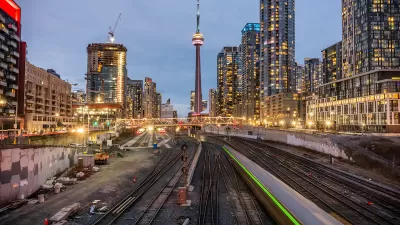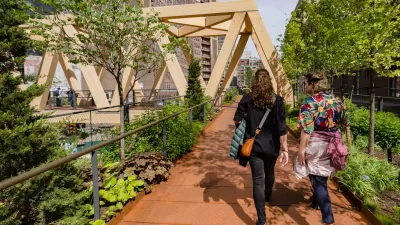Landscape architect James Corner pushes the envelope of the field to create innovative projects like The High Line Park in New York. 'There is a desperate need for a different kind of professional who isn’t so Balkanized.'
"Corner has spent the last 25 years becoming that guy in a deliberate attempt to reinvent the field of landscape architecture by pushing aside its second-fiddle status and antiurban tendencies and claiming a more ambitious agenda: to design the postindustrial city. Rather than wielding bushes and trees-the proverbial parsley around the roast of proper architecture-landscape architects are, as Corner sees it, the best prepared to tackle the complex, large-scale, often environmentally damaged sites that have become the hallmark of urban regeneration. He approaches them with the intellectual assurance of a philosopher and the political bravado of a power broker. "I don't want to be embarrassed to be a landscape architect because we're thought of as tree people who come in at the end of the day," he says.
The first built example of that ambition is just now being realized with the opening next month of sections of the High Line, the elevated-freight-railway-turned-park on the West Side of Manhattan. The project has been charmed from the beginning, blessed with astute neighborhood activists, strong political will, and plenty of private money. And yet Corner has constantly had to battle the misconception that the architects, Diller Scofidio + Renfro-his subcontractors-did the heavy lifting while his team merely chose the shrubbery. "In every project we've initiated, we've led, we've had architects and engineers and other experts be part of our team," Corner says. "Professionally speaking, that's a big advance for a field that's normally reticent.'"
FULL STORY: The Long View

Maui's Vacation Rental Debate Turns Ugly
Verbal attacks, misinformation campaigns and fistfights plague a high-stakes debate to convert thousands of vacation rentals into long-term housing.

Planetizen Federal Action Tracker
A weekly monitor of how Trump’s orders and actions are impacting planners and planning in America.

In Urban Planning, AI Prompting Could be the New Design Thinking
Creativity has long been key to great urban design. What if we see AI as our new creative partner?

King County Supportive Housing Program Offers Hope for Unhoused Residents
The county is taking a ‘Housing First’ approach that prioritizes getting people into housing, then offering wraparound supportive services.

Researchers Use AI to Get Clearer Picture of US Housing
Analysts are using artificial intelligence to supercharge their research by allowing them to comb through data faster. Though these AI tools can be error prone, they save time and housing researchers are optimistic about the future.

Making Shared Micromobility More Inclusive
Cities and shared mobility system operators can do more to include people with disabilities in planning and operations, per a new report.
Urban Design for Planners 1: Software Tools
This six-course series explores essential urban design concepts using open source software and equips planners with the tools they need to participate fully in the urban design process.
Planning for Universal Design
Learn the tools for implementing Universal Design in planning regulations.
planning NEXT
Appalachian Highlands Housing Partners
Mpact (founded as Rail~Volution)
City of Camden Redevelopment Agency
City of Astoria
City of Portland
City of Laramie





























